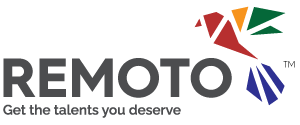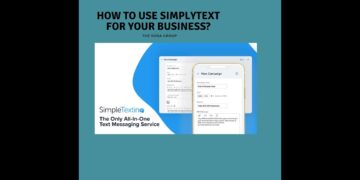In today’s competitive job market, standing out from the pack can be tough. If you’re looking for a way to set yourself apart, consider using data-driven recruiting to your advantage.
In this blog post, we’ll tell you all you need to know about data-driven recruiting and how it can help you think outside the box..
Data-driven Recruiting: Learn How it Can Help You Find the Best Talent
Recruitment tactics that rely on data and statistics to find and evaluate prospects are known as data-driven recruiting.
According to Gem Siocon, “Data-driven recruitment refers to making objective hiring decisions based on a variety of data sources beyond the usual resume screening, interviewing, and extending job offers.”
Consequently, data-driven recruiting can help companies to find the best talent for their open positions by using statistical information to evaluate a candidate’s skills, experience, and fit for a role.
In addition, data-driven recruiting allows business owners, recruiters, and HR specialists to increase the efficiency of the recruiting process, as it can reduce the time and resources required to identify and assess candidates.
How Can Data Help You Identify Talented Candidates Who May Not Have Been Considered in the Past
Recruiting talented candidates can be challenging, especially if you only consider applicants with extensive experience. However, by looking at data, you can identify potential candidates who may not have been considered in the past.
For example, if you’re looking for someone with experience in sales and marketing, you might consider applicants who have worked as market research analysts, brand specialists, research assistants, digital marketing consultants, and inside sales executives.
By looking at data, you can identify patterns and trends that can help you find the best candidates for the job, even if they have previously applied for job positions in your company.
What Are Some of the Benefits of Using Data-Driven Recruiting Techniques to Find New Employees?
Recruiting is a process that companies use to identify and attract potential employees. It traditionally relies on job postings and word-of-mouth methods to reach candidates. However, in recent years, there has been an increased focus on using data-driven techniques to find new employees.
There are several advantages to using the data-driven recruiting approach. First, it can help companies to target their recruiting efforts more effectively, saving time and money. Second, it can help reduce hiring bias by relying on objective data rather than gut feeling or personal preferences.
Finally, it can help improve the quality of hires by ensuring that candidates are selected based on their skills and qualifications rather than their ability to impress during an interview. For these reasons, data-driven recruiting is becoming increasingly popular among employers.
This video lets you learn more about why data-driven recruiting is so important.
How Does Data-Driven Recruiting Differ From Traditional Methods of Recruiting Employees?
Data-driven recruiting relies on statistical information to identify and attract the most qualified candidates. This data can come from various sources, including job postings, resume databases, and social media. As a result, business owners and HR specialists are more likely to find workers who are a good fit for their needs.
In contrast, traditional recruiting methods, such as advertising in newspapers or interviews, often provide less information about candidates and tendencies in the job market.
Consequently, they’re less effective in adapting recruiting methods to the current era, when technologies prevail and job seekers learn more about open job positions by using the Internet.
How Do You Get Started With Data-Driven Recruiting?
The first step in developing a successful data-driven recruiting strategy is to choose the right data and HR metrics.
Nikoletta Bika explains that all companies can benefit from including cost-per-hire, time-to-hire, and other metrics in this strategy. Moreover, you can include other metrics like source of hire, candidate experience score, and job offer acceptance rates.
Here we explain to you what those metrics are and what they entail:
Cost per hire: it’s one of the most important recruiting metrics, comprehending the internal and external recruiting costs and the total number of hires.
Time to hire: this metric allows you to determine the average time of hiring per industry and your company.
Source of hire: this measure shows you the percentage of hires that entered into the recruitment process by channel or source.
Candidate experience scores: you can better understand your candidates’ experience in the recruitment process by implementing metrics like career page conversion and application time.
Job acceptance rates: this metric shows the percentage of candidates accepting your job offers.
Then, you can include these metrics in your data-driven recruiting strategy. Also, we recommend you read our post to learn how metrics can help your business grow.
Takeaway
Data-driven recruiting can be valuable in finding the best talent for your company. By using statistical information to identify talented candidates who may not have been considered in the past, you can expand your pool of potential employees and find the perfect fit for your business.
The benefits of using data-driven techniques to recruit new employees are numerous, and include improved accuracy, increased efficiency, and reduced costs. Getting started with data-driven recruiting is easy, and there are many metrics available to help you get started.
With the right information, you can easily improve your recruitment process and find the top talent for your company.
Our company is a full-service staffing agency specializes in outsourcing remote employees based in Mexico. A business model designed for US companies.














